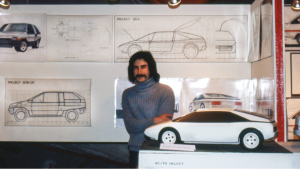With mine clearance equipment, wheelchairs for children in Guatemala, ecological urinals for slum areas and public computers for rural areas, Design without Borders is actively solving multiple challenges facing developing countries.
Developing products to promote and improve sustainable living, Design without Borders uses design in the early stages of development processes to better living conditions, industrial business development and efficient emergency relief in areas of distress.
Initiated in 2001 by Norsk Form and Petter Opsvik, Design without Borders was established to highlight problematic issues in developing countries, such as underdeveloped economies and infrastructures. Today, Design without Borders continues to reveal how design can be used as the tool for long-term aid and emergency relief.
Published by Norsk Form, the Foundation for Design and Architecture in Norway, Design without Borders - Creating Change is a thought-provoking exhibition that displays realistic mock-ups of a number of problem-solving design initiatives to the public for the first time. The exhibition showcases how Design without Borders uses the designer’s creative and analytical skills to develop and improve a more sustainable society.
Believing that the methods used for developing products are as important as the products themselves, Design without Borders collaborates closely with partners in developing countries to broaden and strengthen knowledge exchange and creativity. Furthermore, Design without Borders collaborates with businesses, civil society, authorities and organisations. Embarking on new projects, the initiative seeks to enter into projects that have a local interest for easy and engaging collaborations.
Design without Borders hand-picks designers with special competencies within required fields to contribute to various projects by identifying the need for design, defining the project, developing a financial plan and planning the project, carrying out the project and following up aftewards.
Design without Borders – Creating Change draws on the local context of a developed product to emphasise its importance in developing countries. Projects such as the ecological urinal was placed in a slum setting, while the wheelchair could be tried out on a cobblestone street. In order to make the exhibition as realistic and interactive as possible, Design without Borders allowed visitors to test mine-clearing equipment in an area that included an emergency shelter containing an earthquake simulator.
"The exhibition is interactive. When you come here you will be able to try out the equipment and experience what it is like for others," says Truls Ramberg, curator of Design without Borders – Creating Change.
Along with the finished products, the exhibition showcased a selection of texts, photos and videos in order to communicate the importance of the design process behind each individual product.
Here is a look at a few projects that were on display at the Design without Borders – Creating Change exhibition:
Designing Wheelchairs in Guatemala resulted from the fact that most wheelchairs users in Guatemala have to rely on expensive imports. For this project, Design without Borders partnered with Transiciones, an organisation where 70% of its staff are wheelchair users, giving the project unrivalled insight into the challenges facing wheelchair users. Designing economical wheelchairs for marginalised groups, the project uplifts residents of Guatemala and improves their otherwise isolated lives. Design without Borders further partnered with Norwegian industrial designer Jannicke Rogne and Guatemalan industrial designer Juan Carlos Noguera for this project.
Mine-Clearing Equipment is a project that aims to make protective gear more user friendly while still ensuring its efficiency. Design without Borders embarked on this project, as over 5 000 people die every year due to mine bomb related incidents. Partnering with Norwegian People’s Aid, Kode Design and ROFI Industrier, Design without borders created lightweight-blue-plastic-mesh protective body armour nicknamed “the Armadillo”. The suit decreases body temperature by one to three degrees and increases worker efficiency by 10 to 15%.
Toilets in the Slum seeks to address diseases caused by a lack of sanitation in slum areas around the world. In collaboration with Crestanks, a Ugandan manufacturer of plastic products, Design without Borders has developed an ecological urinal for domestic use. The urinal addresses issues such as the lack of space and cleanliness. Each urinal is easy to clean and the production of each is remarkably economical. Furthermore, the urinal preserves all nutrients of urine, later be used as a high-quality fertiliser.
Computers for Young People gives the youth of Uganda the chance to participate in the digital future. Partnering with UNICEF, Design without Borders ensures that all computers are suited to the needs of the Ugandan youth, and that the maintenance of computers are adapted to rural areas. The project aims empower the 78% of the population under 30 who do not have access to the internet.
Other projects include life jackets for rural fishermen, motorcycle helmets, innovation for artists, designing efficient and safe oilcans, progressive shelters, and cycle lanes and bus stops.
Design without Borders – Creating Change was on display at Norsk Form’s DogA exhibition space in Oslo, Norway earlier this year.




















